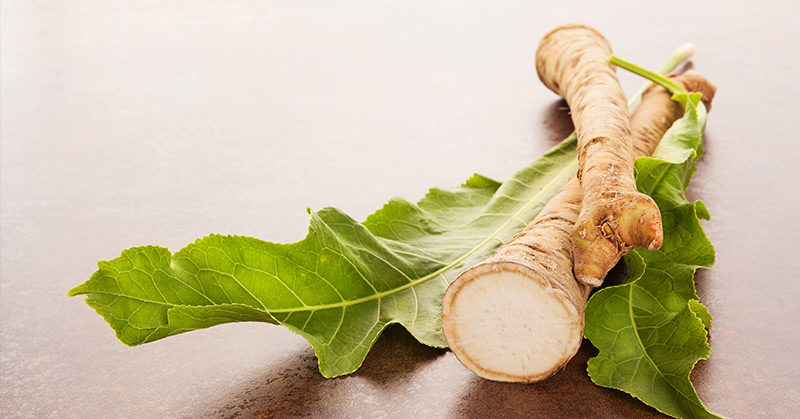Horseradish root is a cruciferous vegetable that is in the same family as mustard, wasabi, cabbage, broccoli, and kale. Thought to have originated in Eastern Europe, experts believe this hearty vegetable has been in cultivation for less than two thousand years [1]. Most people recognize horseradish as that pungent, nose, and eye-burning condiment often used as a topping for meats and seafood. It gets its strong taste and aroma from mustard oil, which forms when the root is cut and an enzyme breaks down a compound called sinigrin [2]. This humble vegetable, however, is good for more than just a topping for your steak dinner. It also has an impressive nutrition profile and was often used by ancient and medieval people for medicinal purposes [1]. New research has emerged over the last several years that has brought horseradish root back into the spotlight and has unearthed a number of health benefits associated with the plant.
Nutrition Profile for Horseradish Root
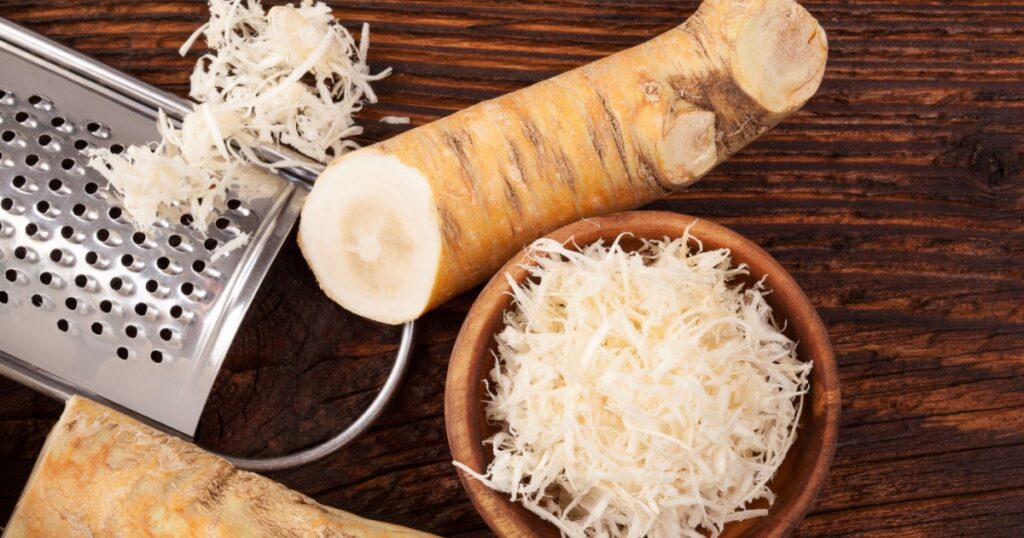
Horseradish root provides a tonne of flavor for very few calories, as well as a good dose of vitamin C and folate. Horseradish also provides some calcium, magnesium, phosphorus, and potassium [3].
Read More: Gua Sha: Surprising Health Benefits of The Red Dragon Massage
The nutrition profile per one tablespoon of the vegetable is as follows:
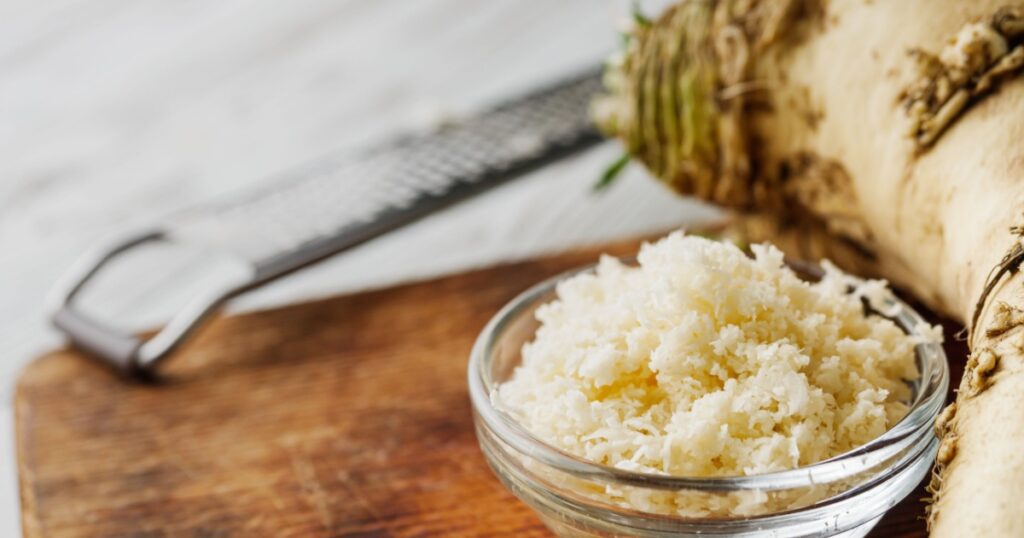
Calories: 7
Protein: less than 1 gram
Fat: less than 1 gram
Carbs: 2 grams
Fiber: 0.5 gram
Health Benefits of Horseradish Root
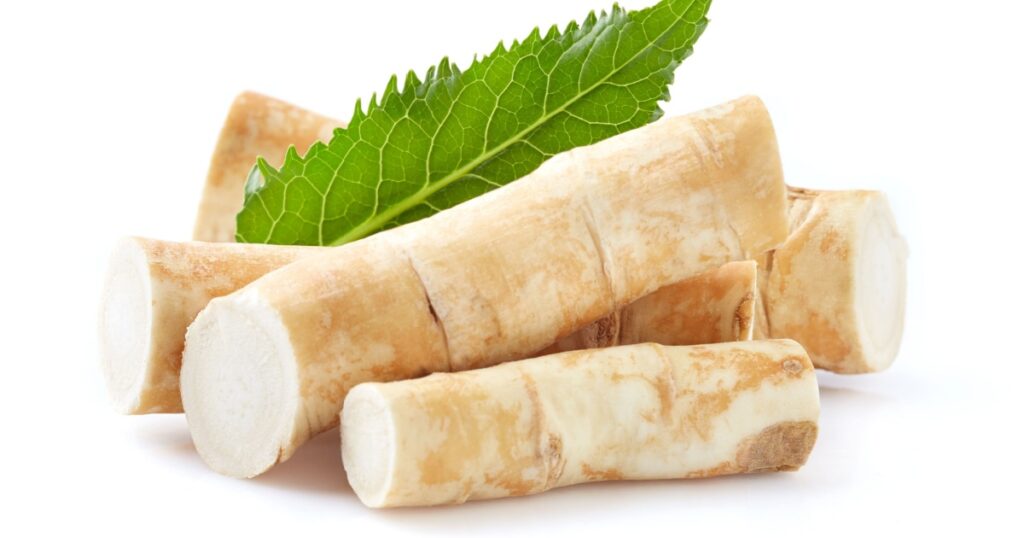
There are many other plant compounds found in horseradish, including glucosinolates, which break down into isothiocyanates and provide a host of health benefits [4]:
1. May have anti-cancer properties
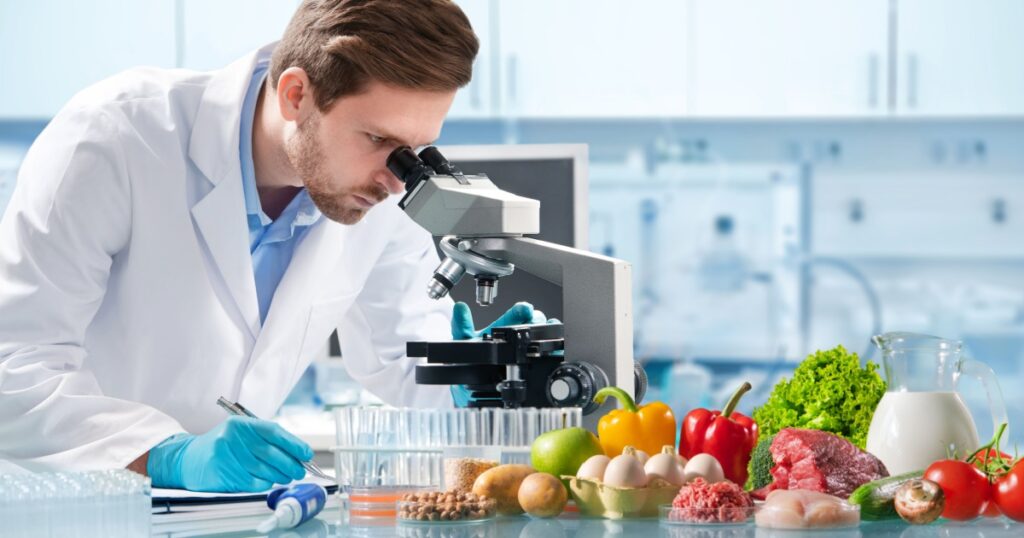
A 2004 study from the University of Illinois found that the substantial amounts of glucosinolates in horseradish have been shown to increase human resistance to cancer. Professor Mosbah Kushad said this is because glucosinolates increase the liver’s ability to detoxify carcinogens and may actually suppress the growth of cancerous tumors.“Horseradish contains more than 10-fold higher glucosinolates than broccoli, so you don’t need much horseradish to benefit. In fact, a little dab on your steak will go a long way to providing the same health benefits as broccoli,” Kushad said [5].
Additionally

Kushad explained that unlike many other vegetables, processing horseradish actually improves its cancer-fighting abilities, because when you break down the vegetable it releases an enzyme that breaks down glucosinolates into the compounds that produce the anti-cancer benefits [5]. Of course, this is not to say that horseradish should be used as a cancer treatment or something that will definitely prevent cancer. However, adding this flavourful root to a generally wholefood-based nutrient-dense diet is a step in the right direction. This brings us to the next point.
2. High Antioxidant Content
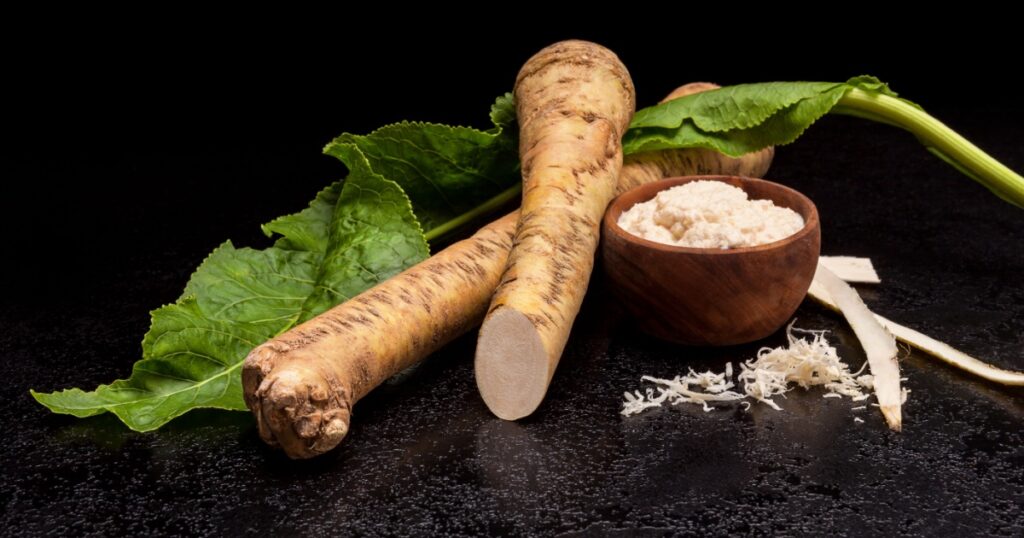
Horseradish root contains a number of phytonutrients that have antioxidant properties. These compounds help protect lymphocytes (the white blood cells of your immune system that fight off diseases) from oxidative damage. These compounds were also shown to be antimutagenic, which means they protect parts of the body from mutagens that can cause permanent damage [6].
Read More: 21 of the Best Natural Oils for Your Skin and Hair (Benefits and How to Use)
3. Antibacterial Properties

The oil found in horseradish that gives it its pungent taste and aroma, allyl isothiocyanate, more commonly known as mustard oil, is known as an antibacterial and antimicrobial agent against a number of pathogens [7]. There have been some studies to suggest that this oil may fight a range of dangerous bacteria, including E. coli and Salmonella [8]. The exact mechanism by which the isothiocyanates found in horseradish prevent bacterial cell growth is not yet well understood, however, experts suspect it is due to isothiocyanates that bind to certain enzymes [7].
4. Acts as a Digestive Aid

If you tend to struggle with digestive issues, regular bowel movements, or constipation, including a bit of horseradish in your diet may help. The vegetable is considered to be a cholagogue, which is a substance that stimulates the production of bile in the gallbladder [10,11]. Bile helps support a healthy digestive system and assists in ridding the body of excess cholesterol, fats, and other wastes.
5. May Improve Respiratory Health

If you’ve ever eaten horseradish, you’ll be familiar with the burning sensation it causes in your sinuses, nose, and throat. For that reason, it is often used to relieve symptoms from colds and breathing issues. One study found that taking a supplement made with 80mg of dried horseradish root and 200mg of nasturtium was just as effective at treating acute sinus infections and bronchitis as a traditional antibiotic [9]. Theoretically, including horseradish more frequently in your diet could help prevent certain respiratory illnesses, though further trials would be needed to validate this.
Read More: Cuban Oregano: Potential Uses, Benefits, Recipes, And More
Where to Find Horseradish Root
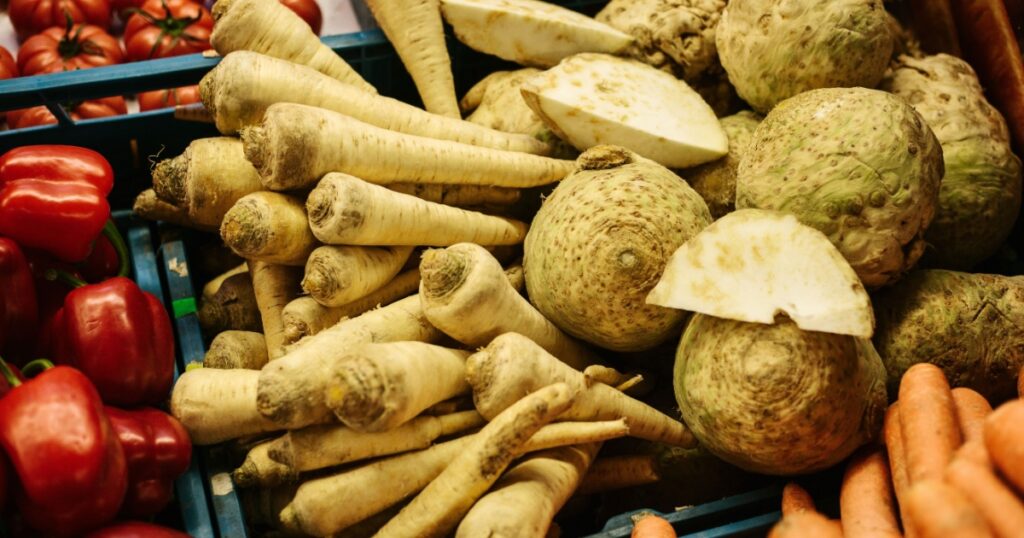
Fresh horseradish is available in most supermarkets year-round, however the best time to buy it is when it’s in season in the spring. It is likely easier, however, to buy already-prepared horseradish, which is often preserved in vinegar and salt and sold in a bottle in the refrigerated condiments section of the grocery store. While there are many ways to enjoy horseradish, it is most commonly used as a topping for meats and seafood.
Are There Any Risks Associated with Horseradish?
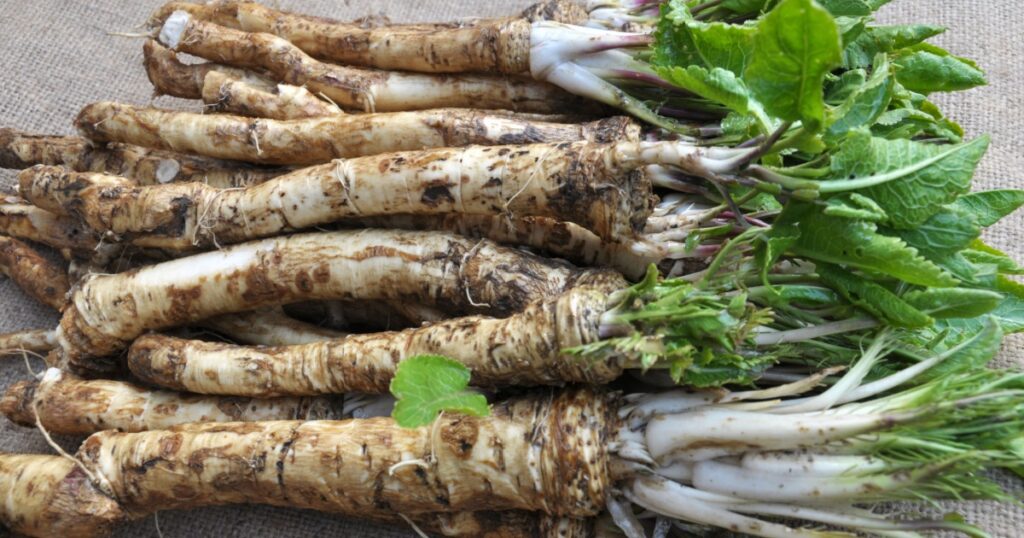
There is not a significant amount of information regarding the risks or possible side effects of eating horseradish, however, it is best to use it sparingly because it is quite pungent, and it could irritate your mouth, nose, or stomach. There is insufficient information regarding whether or not horseradish is safe to consume for pregnant women, however some animal studies from the eighties and nineties found that it could cause miscarriages if consumed in large amounts, so it is best that pregnant and breastfeeding women consume only modest amounts of the vegetable [12]. Finally, there is some evidence that horseradish may decrease the effects of the hypothyroidism drug Levothyroxine, so if you take this drug, you should speak with your doctor if you are interested in using horseradish medicinally [12].
A Condiment that Packs a Punch
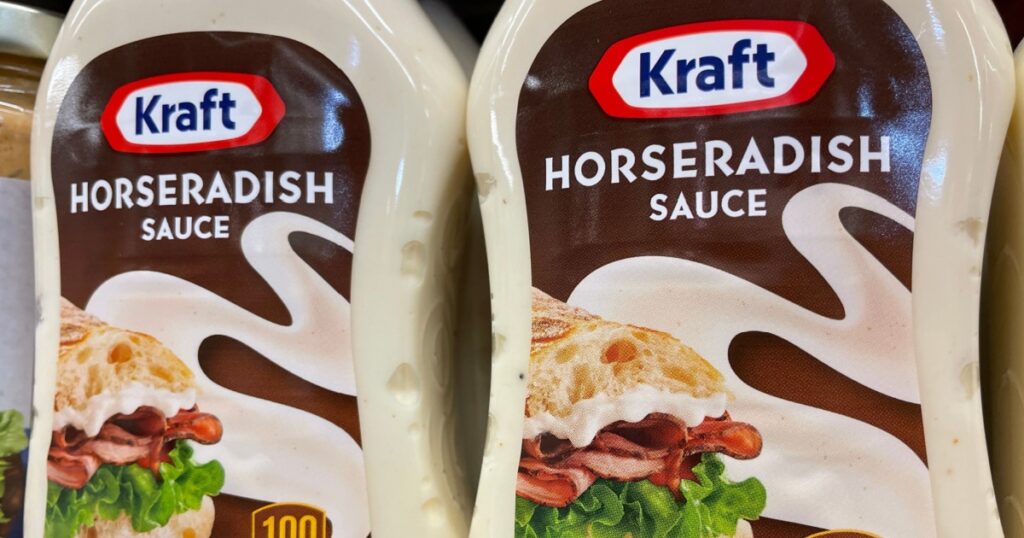
There is a growing body of research to suggest that horseradish is more than just a steakhouse staple. This vegetable is cheap to buy, easy to prepare, and has a number of potential health benefits that, when consumed in moderation, come with very little risk. If you are looking for an easy way to improve your health, consider adding a bit of horseradish to your diet.
Read More: Bone Broth: Nutrition, Health Benefits, And How To Make It
Sources
- https://link.springer.com/article/10.1007/BF02860621
- https://pubmed.ncbi.nlm.nih.gov/25684599/
- https://fdc.nal.usda.gov/fdc-app.html#/food-details/173472/nutrients
- https://pubmed.ncbi.nlm.nih.gov/15537302/
- https://aces.illinois.edu/news/little-dab-horseradish-could-help-resist-cancer
- https://pubmed.ncbi.nlm.nih.gov/24637991/
- https://www.ncbi.nlm.nih.gov/pmc/articles/PMC2814364/
- https://pubmed.ncbi.nlm.nih.gov/19346022/
- https://pubmed.ncbi.nlm.nih.gov/16618018/
- https://medical-dictionary.thefreedictionary.com/cholagogue
- https://books.google.ca/books?id=1f-lAwAAQBAJ&pg=PT1009&lpg=PT1009&dq=cholagogue+horseradish&source=bl&ots=gmH9qQsmTY&sig=tqOxMsQ4ZgMNdXDxlwJrDFfD074&hl=en&sa=X&redir_esc=y#v=onepage&q=cholagogue%20horseradish&f=false
- https://www.verywellhealth.com/horseradish-benefits-4585217
Disclaimer: This information is not intended to be a substitute for professional medical advice, diagnosis or treatment and is for information only. Always seek the advice of your physician or another qualified health provider with any questions about your medical condition and/or current medication. Do not disregard professional medical advice or delay seeking advice or treatment because of something you have read here.
